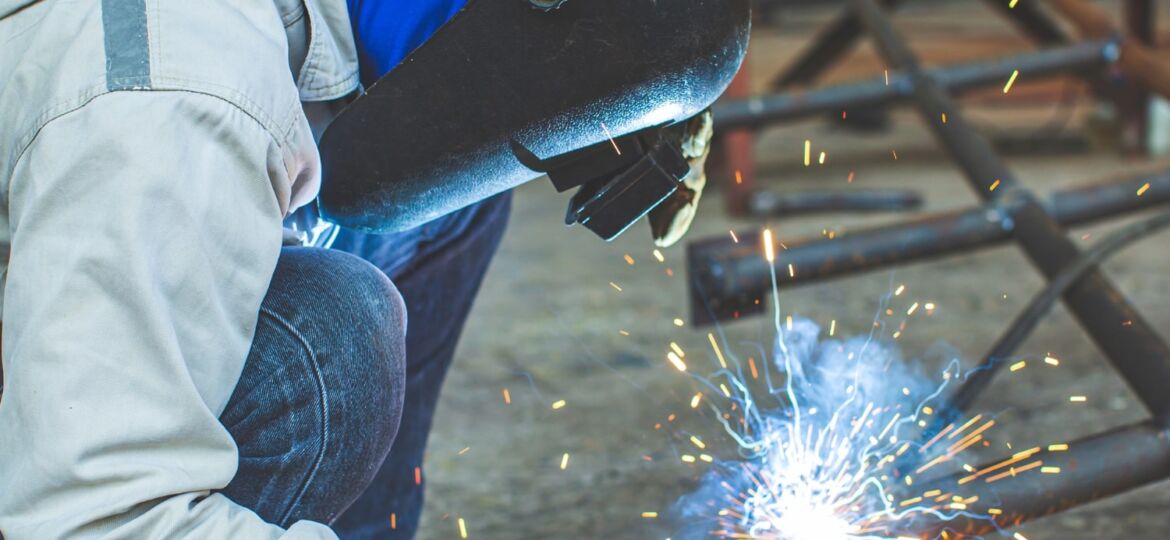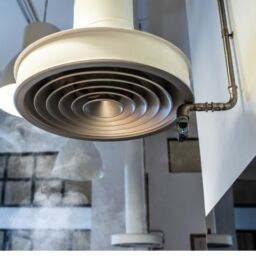
In the world of welding, where the sparks fly and the metal melds, there’s an often-overlooked silent assailant lurking in the background: welding fumes.
These seemingly innocuous plumes of smoke may appear inconsequential amidst the fiery brilliance of the welding process, but their impact on both human health and the environment is far from negligible.
This is where the unsung hero of the welding world comes into play—the welding smoke eater.
Welding, a crucial industrial process in construction, manufacturing, and various other sectors, involves the fusion of metals using extreme heat. As the metals melt and join, they release a cocktail of noxious fumes and fine particles into the air.
These fumes contain hazardous compounds such as metal oxides, volatile organic compounds (VOCs), and even carcinogens like hexavalent chromium. Inhalation of these contaminants can lead to severe health issues, ranging from respiratory problems to long-term diseases.
In this exploration, we delve into the significance of welding smoke eaters, shedding light on their role as guardians of both worker safety and environmental stewardship.
We will unravel the technology behind these ingenious devices, their deployment in diverse industrial settings, and the transformative impact they have on creating cleaner, safer workspaces.
Join us as we embark on a journey to understand why welding smoke eater are not merely optional accessories but indispensable sentinels in the world of welding.
The Importance of Welding Smoke Eater
These fumes contain various harmful substances and pose a substantial risk to both human health and the environment. This comprehensive guide explores the importance of welding smoke eater in mitigating these risks and ensuring a safe, clean working environment. For more information visit click here.
Understanding Welding Fumes
Before delving into the significance of welding smoke eaters, it’s crucial to understand what welding fumes are and why they are problematic. When metals are heated during welding, they release tiny particles and gases into the air. These emissions contain:
- Metal Oxides: These are formed when the metal reacts with oxygen in the atmosphere. Common metal oxides include iron oxide (rust), aluminum oxide, and zinc oxide.
- Volatile Organic Compounds (VOCs): Welding also releases VOCs from coatings, paints, and other materials on the metal being welded. These compounds can be hazardous to health.
- Particulate Matter: Fine particles, including ultrafine particles, are released during welding. These particles can penetrate deep into the respiratory system and cause health issues.
- Hexavalent Chromium: This carcinogenic compound is often present in stainless steel and becomes airborne during welding.
Health Risks of Welding Fumes
Exposure to welding fumes can have severe health consequences for welders and those working in close proximity. Some of the health risks associated with welding fumes include:
- Respiratory Problems: Inhaling welding fumes can lead to acute and chronic respiratory issues such as bronchitis, asthma, and chronic obstructive pulmonary disease (COPD).
- Metal Fume Fever: It’s a flu-like illness caused by inhaling excessive amounts of metal fumes, particularly zinc oxide. Symptoms include fever, chills, headache, and muscle aches.
- Lung Cancer: Prolonged exposure to certain welding fumes, like those containing hexavalent chromium, can increase the risk of lung cancer.
- Nervous System Effects: Some welding fumes, such as manganese, can affect the nervous system, leading to neurological symptoms resembling Parkinson’s disease.
The Role of Welding Smoke Eaters
Welding smoke eaters, also known as welding fume extractors or collectors, are devices designed to capture and remove welding fumes from the air. These systems play a critical role in maintaining a safe and healthy workplace for several reasons:
Protecting Worker Health
The primary function of welding smoke eaters is to safeguard the health of welders and other employees in the vicinity. By capturing and filtering out harmful fumes and particles, these devices significantly reduce the risk of respiratory issues, metal fume fever, and long-term health problems associated with welding.
Regulatory Compliance
Many countries have strict occupational safety regulations in place to limit workers’ exposure to hazardous substances, including welding fumes. Using welding smoke eaters helps businesses comply with these regulations, avoiding fines and legal liabilities.
Improved Productivity
Cleaner air leads to a more comfortable and productive working environment. Welders can focus better on their tasks when they are not constantly exposed to noxious fumes. Reduced health issues also result in fewer sick days, contributing to increased productivity.
Environmental Responsibility
Welding smoke eaters not only protect workers but also prevent the release of harmful pollutants into the environment. This is especially important for businesses seeking to reduce their carbon footprint and contribute to sustainability efforts.
Versatility
Welding smoke eaters come in various sizes and configurations to suit different welding processes and environments. Whether you’re working in a small welding shop or a large manufacturing facility, there’s a smoke eater solution tailored to your needs.
Cost Savings
Investing in welding smoke eaters can lead to long-term cost savings. By preventing health issues and regulatory fines, businesses can avoid expensive medical bills and legal expenses. Additionally, improved productivity can boost revenue.
How Welding Smoke Eaters Work
Welding smoke eaters operate on the principle of source capture. They use various mechanisms to capture welding fumes directly at their point of generation. Here’s a simplified overview of their operation:
- Capture Hood: A capture hood is positioned close to the welding area. It acts as a suction inlet, drawing in the fumes and particles as they are generated.
- Filtration System: Once captured, the fumes pass through a filtration system. This system typically includes filters designed to remove particulate matter and gas-phase contaminants. HEPA (High-Efficiency Particulate Air) filters are commonly used for fine particulate removal.
- Clean Air Release: After filtration, the cleaned air is released back into the workspace, ensuring that the environment remains free of contaminants.
- Maintenance: Regular maintenance of the filters and system components is crucial to ensure efficient operation and worker safety.
Choosing the Right Welding Smoke Eater
When selecting a welding smoke eater for your workspace, consider the following factors:
- Type of Welding: Different welding processes generate varying levels and types of fumes. Ensure the smoke eater you choose is suitable for the specific welding applications in your facility.
- Airflow Capacity: Determine the airflow requirements based on the size of your workspace and the number of welding stations.
- Filtration Efficiency: Look for units with high-efficiency filtration to effectively capture both particulate matter and gas-phase contaminants.
- Mobility: Depending on your needs, you may require a stationary smoke eater or a portable unit that can be moved between welding stations.
- Noise Level: Consider the noise output of the smoke eater, especially if you have employees working nearby.
- Ease of Maintenance: Ensure that the system is easy to clean and maintain to minimize downtime.
- Regulatory Compliance: Verify that the smoke eater meets relevant safety and environmental regulations.
Conclusion
Welding smoke eaters are indispensable tools in ensuring a safe and healthy welding environment. By capturing and removing harmful welding fumes, they protect the well-being of workers, help businesses comply with regulations, and contribute to improved productivity and environmental responsibility.
When choosing a welding smoke eater, it’s essential to consider your specific needs and prioritize filtration efficiency, airflow capacity, and ease of maintenance. Investing in the right smoke eater not only safeguards health but also promotes a cleaner, more sustainable workplace.




